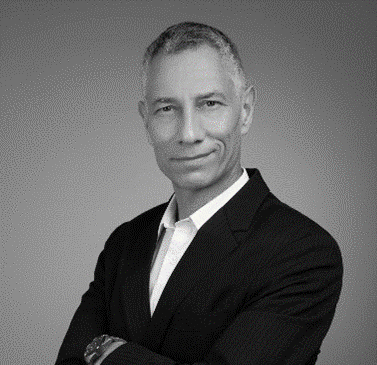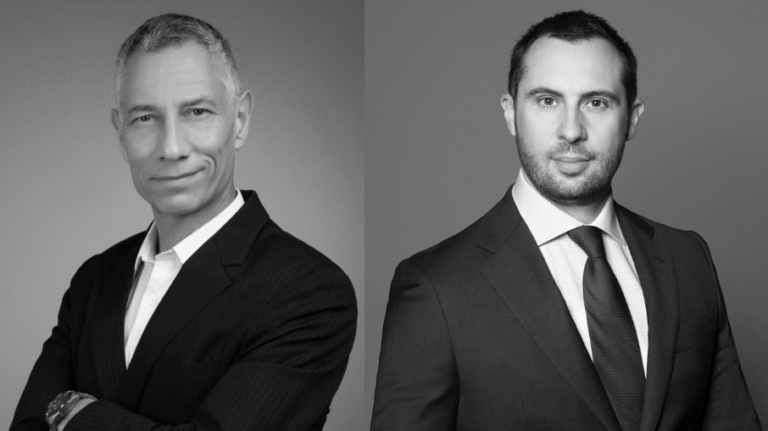Covario is an independent Crypto Prime Brokerage for institutional investors covering crypto trading, custody, financing and more. Keith Noyes, Chief Risk and Compliance Officer, and Florian Giovannacci, Head of Trading, share their thoughts on the regulatory landscape and trading trends in the realm of institutional digital assets.
The recent collapse of the $60bn Terra-Luna ecosystem sent waves through the entire crypto market. Both retail investors as well as institutional funds lost millions of dollars in the matter of days, with some investors citing insufficient regulation. Prime Broker Covario shares some insights into how institutional traders deal with these types of situations, uncertain times in general, as well as the long-term implications of the Terra meltdown.
CVJ.CH: What is the role of a crypto prime broker in the institutional finance market? For institutions, what are the benefits of working with a prime brokerage?
Florian Giovannacci: The role of a prime broker is to be a one-stop venue giving access to the full landscape of crypto (OTC, exchange DMA, lending, borrowing, staking, DeFi…) within a secure, regulatory compliant framework. That said, the crucial part that differentiates a prime brokerage from a regular one is the financing part, enabling clients to optimize (i.e. minimize) the collateral requirement related to their trading strategies.
Keith Noyes: Institutional investors, especially those from traditional finance backgrounds, face regulatory requirements as well as expectations around market best practices that can make navigating the crypto investment landscape challenging. A prime broker understands these regulatory requirements and assists its clients to find solutions, be they related to custody, counterparty risk exposure, or KYC/AML for example. They also have exacting expectations around execution, latency, and bookkeeping.
How would you describe the traditional institutional investor who uses your services?
Florian Giovannacci / Keith Noyes: Institutional investors come from many different backgrounds with many different motivations for their trading strategies. Many family offices and asset managers are directional traders that tend to look for target entry and exit points and follow a "buy and hold” strategy in the interim. Others look to trade relative value between different coins or just take advantage the attractive lending yields offered on reputable stable coins while waiting for market opportunities.
Hedge funds and other systematic traders often try to arbitrage the futures basis or the volatility surface of instruments on various exchange venues. Some may set up quantitative signalling algorithms to capture changes in market sentiment, while high frequency traders use low-latency algorithms to market make on trading venues. What almost all of these institutional investors have in common is increased awareness of regulatory requirements and greater sensitivity to credit, custodial and operational risks.
What are the most common challenges / developments within the institutional crypto space?
Florian Giovannacci: The challenges mainly have to do with keeping up with an ever-changing environment technologically. For instance, products that were simply a niche not so long ago (e.g.: NFTs, Decentralized exchanges) are now a large segment. Being at the front edge of the innovation while still maintaining institutional grade services is a constant challenge.
Keith Noyes: We are lucky to be headquartered in Switzerland, where crypto regulatory policy is well thought-out and developed. However, there is a vast global market for crypto assets and regulatory ambiguity in places such as the United States leads to uncertainty that may inhibit growth. For historical reasons, crypto is also associated with illicit activities and it is a constant battle to educate regulators that there is actually far greater transparency on public ledger blockchains than there is with fiat cash transactions.
From a compliance point of view, what does the onboarding process entail for client or partnering venues, and why is it important for investors to be protected?
Keith Noyes: When we are onboarding clients, we begin with KYC. We need to know the company, its beneficial owners and directors and screen all of them for sanctions, PEP (politically exposed person) identification and adverse media reports. We also look at the underlying business and sources and uses of funds and make sure that this paints a picture consistent with the investing activity they plan to conduct with us. Once they are onboarded, every transaction is monitored through our blockchain forensics service provider and all alerts are investigated.
When we onboard a trading venue (and they onboard us), we look at whether the liquidity and products they offer are of interest to our clients, whether they pose any credit or reputational risk issues and what their historical track record is like with regard to hacks, access denial attacks, and regulatory embargos, etc.
The current market environment is often classified as “uncertain”. How are your customers behaving in these circumstances?
Florian Giovannacci: The current crypto market environment is not more uncertain that it has been since its creation. Native crypto players have a higher risk of tolerance than in traditional finance and are well used to the short succession of bull and bear markets. The recent high correlation to US equities has created a new degree of uncertainty related to the FED policy though.
Keith Noyes: Market volatility and changes in the macro environment have led to a reassessment of "fair value” for many tokens. This price discovery is still taking place and presents challenges to the buy and hold investors described above. Many of them are changing their entry and exit point assumptions at the moment and trading less actively while waiting for a clear market direction to emerge. Investors trading arbitrage or other quantitative strategies are less impacted by this market uncertainty. They trade when their models signal an arbitrage opportunity or a particular market signal.
How do institutional investors differ from retail investors in terms of investing behavior?
Florian Giovannacci: Compared to retail, institutional investors would have clearer strategies defined, with entry and exit points, a risk management department that keep traders disciplined according to predefined guidelines. Also, retail investors are not subject to the restrictions that regulators might impose on institutionals. Moreover, they tend to be less active in the so-called meme coins that gained popularity over the last 2 years.
Keith Noyes: Though it may be stereotypical to say so, most retail investors are more emotionally driven than institutional investors. They are trading their own net worth and are therefore generally more skittish about down markets and slower to take profit in rising markets. Institutional investors tend to be more analytical and dispassionate in their trading.
What do you foresee happening in the future for crypto to become mainstream?
Florian Giovannacci: Widespread clear regulation enabling bank adoption, with easy payment and transfer from 1 single fiat/equities/crypto platform. Central Banks joining with their CBDC. A bit less volatility. I would say crypto is already mainstream in many countries where the population is young, as we see that 40% of the adult population in Nigeria or 25% in Turkey already owns crypto.
Keith Noyes: In addition, in the not too distant future we can expect that FX market price discovery will migrate to the CBDC trading space and that the tokenization of financial assets will completely transform for the better the way these assets are traded and risk managed.
What would happen if crypto becomes more regulated?
Keith Noyes: I think this is a when not if question. Certainly the elements of crypto that are becoming more mainstream will become more regulated – in many cases institutional investors will require this to participate. The bigger question is whether the innovative side of the technology, which requires less regulation and standardization to develop, will be allowed to flourish or if overzealous regulation crushes it.
Florian Giovannacci: Flow will have to progressively migrate from unregulated venues to the more compliant ones, creating more job opportunities and wider mainstream adoption.
What does the Terra-Luna crash mean for the market and the institutional environment?
Keith Noyes: Stablecoins are very important to market development, but the Terra-Luna crash has shown that not all stable coins are created equal. We expect that recent events have heightened this awareness and will lead to a ""flight to quality” to USDC, offers the greatest transparency around its audit process that provides comfort that it truly is backed one-for-one with appropriate fiat currency assets. We note also that USDT has a strong historical market position due to first mover advantage and being the coin of choice on several popular trading venues, but we are wary of ongoing investigations of its audit practices by regulators and that is has not achieved the same level of auditing transparency that USDC has.
Florian Giovannacci: Despite the turbulences it created, the Luna collapse has demonstrated the remarkable resilience of the crypto industry. While some are probably still licking their wounds, there was no collapse of lenders/liquidity providers or crypto exchange. Furthermore, the fire sale of $3bn of BTC by the Luna Foundation Guard without major price impact is a proof of the deep liquidity in the main crypto pairs. A fact that should reassure participants looking to enter in the space.
Which parts of the crypto ecosystem are currently most attractive to institutional traders?
Florian Giovannacci: In these volatile markets, market neutral strategies are favoured by the most sophisticated participants. We also see gradually investors taking advantage of very attractive entry points on Alt coins to start building long positions. Current lending yields are a bit low in historical terms and it’s a bigger challenge to attract volumes when rates are considered risk adjusted. But situation would change quickly if sentiment improves.
Keith Noyes: There are several areas that are attractive. With inflation running rampant in many economies, fiat currencies are being debased and many crypto investors are looking to "digital gold” for better stores of value as well as higher rates of return through staking and lending. At the same time, crypto markets are still young and less efficient and so offer fertile ground to trade algorithmically driven strategies.
There are also exciting developments on the technology side that particularly interest crypto native investors. There are hundreds if not thousands of use cases for DLT yet to be developed and backing the winning protocols is likely to prove quite lucrative.
 Keith Noyes is Chief Risk and Compliance Officer at Covario. Keith spent 12 years at the International Swaps and Derivatives Association (ISDA), where he held the position of APAC Regional Director. He is currently an Independent Non-executive Director at OTC Clear (subsidiary of HKEx) and sits on their Risk Committee. He is also a member of the Hong Kong Securities and Futures Commission Product Advisory Committee. Keith set up Merrill Lynch's equity derivatives desk in APAC and worked for over 10 years in derivatives trading and structuring.
Keith Noyes is Chief Risk and Compliance Officer at Covario. Keith spent 12 years at the International Swaps and Derivatives Association (ISDA), where he held the position of APAC Regional Director. He is currently an Independent Non-executive Director at OTC Clear (subsidiary of HKEx) and sits on their Risk Committee. He is also a member of the Hong Kong Securities and Futures Commission Product Advisory Committee. Keith set up Merrill Lynch's equity derivatives desk in APAC and worked for over 10 years in derivatives trading and structuring.
Florian Giovannacci is Head of Trading at Covario. Florian has over 10 years of experience in trading, as derivatives trader at hedge fund Argentiere Capital and previously at Derivative Partners. He started his career at Socgen Corporate and Investment Banking.





